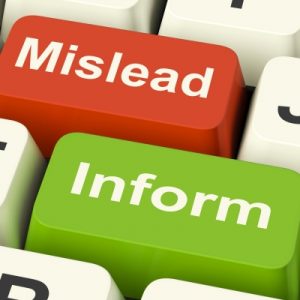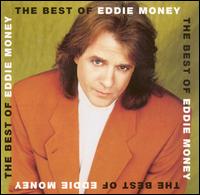When you participate in your employer-sponsored 401(k) plan (or any type of Qualified Retirement Plan, including 403(b), 457, etc.), the first step is to determine how much money you will defer into the plan. We discussed this previously in an article about contributions to your 401(k) plan.
Once you’ve determined the amount you’ll contribute, the next step is to allocate your funds within the account. This starts with an overall plan for your investment allocation – which you should take time to plan in advance. For the purposes of our illustration here, we’ll say that you have a plan to split your account 75% to stocks and 25% to bonds. Within the stock allocation, you want to split this as 1/3 each to large cap stock, small cap stock, and international stock. In the bond category you want to split this to 80% domestic bonds and 20% international bonds.
Now you need to review your 401(k)’s investment options. Generally you will have anywhere from five to 15 or more investment choices, and sometimes you have an open brokerage option (we’ll talk about this more later). Within the investment options you’ll likely have at least one (if not more) of the following: large cap stock, small cap stock, international stock, fixed interest (like a money market), and domestic bonds.
Sometimes there will be more than one choice in each asset classification, and it often doesn’t make a lot of sense to invest in more than one mutual fund within the same asset class. This is due to the fact that, unless one of the fund choices is limited in its investment choices (versus the other funds in the group), they are likely to be very closely correlated in their performance and returns. By “limited in its investment choices” I mean that the fund is sector-specific (such as a healthcare fund) or valuation-specific (such as a growth or value fund).
When you have two or more funds within the same asset class that are indistinguishable from one another other than by name, it’s time to dig a bit deeper. Your plan administrator should provide you with access to data about the investment choices to help with the selection process. One of the first things you should look at and compare between the two (or more) choices is the expense ratio of the funds. This factor is one of the simple factors that you can control, and which can have a significant impact on your life-long results. Other factors to compare include the recent and long-term investment results (which should be similar for similar funds), turnover ratio, manager tenure, and the like.
If the expense ratios you’re seeing are all above 1% – don’t feel like you’re alone. A 1% mutual fund expense ratio is ridiculously high these days when you can get exchange-traded funds or indexed mutual funds with expense ratios in ranges at 1/3 of that rate or less.
This is when you need to review all of your portfolio allocations and consider how you’re splitting things up across the board. Perhaps you have a 401(k) plan at an old employer, an IRA, a taxable brokerage account and/or possibly a Roth IRA. When you have other investment accounts to choose from, it can help you to limit exposure to some of the higher-expense funds like your employer’s 401(k) plan.
Let’s say for example that your 401(k) has six funds available for allocation: Large Cap Fund A (expense ratio 1.15%), Large Cap Fund B (expense ratio 0.95%), Small Cap Fund C (expense ratio 0.54%), International Stock Fund D (expense ratio 1.05%), Domestic Bond Fund E (expense ratio 0.75%) and a Money Market Fund F (0.10% expense ratio). Earlier we indicated that we wanted to break out our allocation as 25% Large Cap, 25% Small Cap, 25% International, 15% Domestic Bonds and 10% International Bonds. Your allocation choices make the first four allocations simple: choose Fund B for 25% (because it’s the lowest cost), Fund C – 25%, Fund D – 25% and Fund E – 15%. The remainder of your allocation could be handled via outside accounts (IRAs, taxable accounts, and the like).
In your IRA you have access to a large-cap stock fund with an expense ratio of 0.19%. Instead of choosing to allocate your Large Cap 25% to your 401(k) high-expense Fund A or Fund B, it makes a lot more sense to allocate this portion to the very low cost option in your IRA.
In addition, your 401(k) doesn’t have an International Bond option at all – so you will need to pick that allocation up within your non-401(k) account(s) as well.
The point is that you don’t have to set your allocation separately within each type of account – look at all of them in aggregate and choose the lowest-cost options across all accounts. (You could allocate each account separately but your simplification would come at an unnecessarily-high expense.)
Another point to understand is that the expense ratio is not the only factor to use in your investment choices – but it is (I believe) the most important factor that you have control over which can improve your investment results significantly in the long run. You should review all of your fund choices in context with your available accounts, and make intelligent decisions about which funds to use based on your review.
The last thing to understand is that – especially when you’re just starting out – your allocation percentages won’t be exactly what you planned for until you’ve been contributing for a while. Say for example that you have an IRA with $50,000 invested in it and you’re just starting to contribute to the company 401(k) plan. You’ll be investing $2,000 per year in deferred income, and the company matches an extra $1,000 per year. Your allocation is as we described above in your IRA, and you wonder what makes the most sense for your new $3 grand a year.
In this case, you might choose to put that extra $3,000 all in your Small Cap Fund C, since it has a relatively low expense ratio. As this money builds up over time, look at all of your investment allocations in the aggregate and choose your future investments based on the new present balances. Gradually your funds will build up (at least you hope they will!) and you’ll want to split the money among other funds in the plan, again, in context with your overall investment plan.
 We all know that we should save money for a rainy day, a message we’ve received since we were little ones, but this article covers some more reasons why you should participate in a 401(k) plan, if you have one available.
We all know that we should save money for a rainy day, a message we’ve received since we were little ones, but this article covers some more reasons why you should participate in a 401(k) plan, if you have one available.























 Sterling Raskie, MSFS, CFP®, ChFC®
Sterling Raskie, MSFS, CFP®, ChFC® The latest in our Owner’s Manual series, A 401(k) Owner’s Manual, was published in January 2020 and is available on
The latest in our Owner’s Manual series, A 401(k) Owner’s Manual, was published in January 2020 and is available on  A Medicare Owner’s Manual, is updated with 2020 facts and figures. This manual is available on
A Medicare Owner’s Manual, is updated with 2020 facts and figures. This manual is available on  Social Security for the Suddenly Single can be found on Amazon at
Social Security for the Suddenly Single can be found on Amazon at  Sterling’s first book, Lose Weight Save Money, can be
Sterling’s first book, Lose Weight Save Money, can be  An IRA Owner’s Manual, 2nd Edition is available for purchase on Amazon. Click the link to choose the
An IRA Owner’s Manual, 2nd Edition is available for purchase on Amazon. Click the link to choose the  Jim’s book – A Social Security Owner’s Manual, is now available on Amazon. Click this link for the
Jim’s book – A Social Security Owner’s Manual, is now available on Amazon. Click this link for the  And if you’ve come here to learn about queuing waterfowl, I apologize for the confusion. You may want to discuss your question with Lester, my loyal watchduck and self-proclaimed “advisor’s advisor”.
And if you’ve come here to learn about queuing waterfowl, I apologize for the confusion. You may want to discuss your question with Lester, my loyal watchduck and self-proclaimed “advisor’s advisor”.